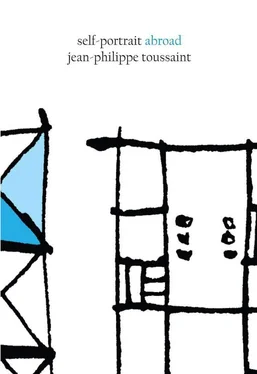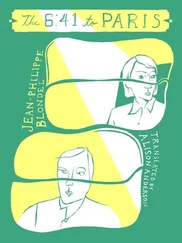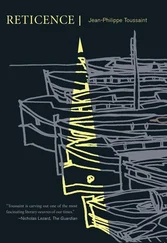The tears didn’t come, although I would have welcomed the voluptuous sensation of crying. I was leaning on the rail of Sanjo Bridge, my chest empty, my immobile fingers trembling slightly (I’d drunk too much the night before), looking down at the silently flowing waters of the Kamo. The weather was bleak and gray and I’d pulled my black wool hat down over my ears. People walked behind me on the pedestrian section of the bridge, crossing paths under transparent umbrellas, under blue umbrellas, under beige umbrellas. I’d stopped beside a pillar out of which rose a decorative cast-iron flame and, motionless under the cold rain whose inconveniences I made no attempt to avoid, seeking them out even, turning my face skywards to feel the raindrops splatter against my cheeks, I thought of the time that had passed, and would have liked to add these rainy tears to its flow. At a loss as to what to do with this very pure moment of melancholy, I wondered how to conserve its essence. I was aware of its exceptional nature, of the unique combination of circumstances that had given rise to it (I’d returned to Kyoto exactly a day ago after a two-year absence). Turning my head towards the Sanjo intersection I saw the hills of Kyoto in the distance, which could just be made out in the mist and, marshalling my forces, closing my eyes to concentrate, I tried to let myself be overcome by tears. I knew I probably wouldn’t be able to cry, but even if no tears came out, my spirit was weeping. I looked down at the flowing waters of the Kamo, I was standing on the Sanjo bridge, a fixed stare on my face, my spirit in tears. My chest swelling slowly in time with my breathing, I was taken by a warm and sensual wave of melancholy that I did nothing to restrain, letting these few timeless tears flow before me into the Kamo.
Walking on, I crossed the bridge while my eyes lingered on the water behind me. It looked gray and dirty, sluggish and rippled, weary of swirling languidly downstream before flowing over a natural dam in the riverbed. Coming to the crossing, I walked by the entrance to the Keihan subway line and headed toward the streetcar station on the other side of the street. The station gates were locked and, stopping a moment, I put my hands on the bars and saw that the station was silent and empty, apparently abandoned for several weeks. The platforms were deserted, above them rose immense canopies whose pillars were starting to rust. A few advertisements with faded colors, very pale fuchsias and pinks, with incomprehensible, practically obliterated kanji remained pasted on billboards for the benefit of implausible commuters. Crude lattice fences had been put up on either side of the main entrance, into which planks had been nailed in a cross to board up the entryway. The rails had disappeared from the tracks below, making way for a sort of no-man’s-land between the platforms, a sprawling gravel landscape strewn with stones and old lighters, broken glass and clumps of weeds that had grown up here and there beside the puddles. I didn’t move, there on the other side of the bars, my eyes fixed on those large motionless puddles reflecting the sky, studded relentlessly by the steady drizzle.
This wasn’t the first time I’d seen a place I’d frequented in the past disappear in this way, the transformation of a location I’d known, but seeing this desolate spectacle, this abandoned station out of bounds behind iron bars, this deserted station with its disused platforms, whose tracks had become a craggy rain-soaked wasteland and whose main hall with its ticketing machines was now a junkyard where a rickety turnstile lay askew in the mud, I realized that time had passed since I’d left Kyoto. And if this affected me so deeply on that day, it was not only because my senses, numbed by the prevailing grayness and the alcohol in my blood, naturally put me in a melancholic frame of mind, it was also because I suddenly felt sad and powerless at this brusque testimony to the passage of time. It was hardly the result of conscious reasoning, but rather the concrete and painful, fleeting and physical feeling that I myself was part and parcel of time and its passing. Until then, the feeling of being carried along by time had always been attenuated by the fact that I wrote — until then, in a way, writing had been a means of resisting the current that bore me along, a way of inscribing myself in time, of setting landmarks in the immateriality of its flow, incisions, scratches.
about the author and the translator
JEAN-PHILIPPE TOUSSAINT is the author of nine novels. His writing has been compared to the work of Samuel Beckett, Jacques Tati, and Jim Jarmusch.
A native of Vancouver, JOHN LAMBERT studied philosophy in Paris before moving to Berlin, where he lives with his wife and two children. He has also translated Jean-Philippe Toussaint’s second novel Monsieur .












